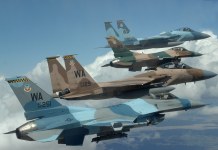Jammu and Kashmir has been the epicentre of terror attacks sponsored by Pakistan in the country with the Kashmir valley being bearing the maximum brunt. Over 40 Pakistani terrorists infiltrated into India through the international border in Jammu and then moved to the Kashmir Valley according to a National Investigation Agency (NIA) probe. Are these signs of changing strategy of Pakistan based terror groups?
- Is the Indian Army Losing Grip with Escalating Violence in Kashmir?
- Pakistani BAT Commandos Bleeding Indian Border Security Forces
The National Investigation Agency reported this after the quizzing many overground workers (OWGs) linked to Pakistan-based terror group Jaish-e-Mohammad (JeM).
“The National Investigation Agency submitted a comprehensive report to the Union home ministry, emphasising the fact that Pakistani terrorist groups were no longer only using the Line of Control (LoC), the de-facto border between the Valley and the Pakistan-occupied-Kashmir (PoK) to infiltrate terror operatives, and they were using the international border as well.”
“In its report, NIA said that OWGs, during their interrogation, disclosed that they picked up over a dozen groups, consisting of three to four terrorists, mainly from Jaish, from the Samba sector’s Bei Nullah area in the last two to three years. In one case, a group of Jaish terrorists after infiltrating from the international border attacked the Nagrota army installation in November 2016 in Jammu. In another case, in September this year, the Jammu and Kashmir police intercepted three terrorists in Jhajjar Kotli and the whole group was neutralised. The rest of the groups were taken to the Tral area of the Valley from where they scattered to other parts,” the official added.
An NIA official, who asked not to be named, confirmed that a report on infiltration through the international border has been sent to the home ministry.
“Since the OWGs were regularly talking about picking up terrorists from the Jammu area, we decided to alert the government about it in the form of a report. The NIA report is just not a compilation of the interrogation reports, but has used mobile phone data to confirm the location of the OWGs when they claimed to pick up the groups of terrorists. The OWGs were taken to the spot from where they picked up the group of terrorists in the Bei Nullah area, and their journey onward to the Valley was tracked,” the official added.
“Their mobile phone data confirms the details provided by them. We have used satellite imagery to point out possible infiltration points in the Samba sector,” the NIA official said.
The official warned that the number of infiltrators could be even higher, as the agency had only talked to Jaish OWGs, according to Hindustan Times
“There might be similar OWGs of Lashkar-e-Taiba (LeT) who may have been facilitating the transportation of terrorists from Jammu to the Valley. There have been cross-border tunnels detected at the international border, and they too may have been used,” the official added.
India shares a 740km-long LoC with Pakistan while the length of the international border in Jammu and Kashmir is 221km. The Border Security Force (BSF) guards the entire India-Pakistan border, but at LoC the force works under the command of the Army.
“I would be inclined to agree to the conclusions drawn by NIA that terrorists may have used international border to infiltrate into India, as seen in the Nagrota or Pathankot or Dinanagar attacks, but frankly, the number of 40 is quite high given the fact that we have multilayered security in place, especially at those areas where cross-border nullahs other natural bodies make our job difficult,” said a BSF official who spoke on the condition of anonymity.
He said NIA is yet to formally share the report with BSF, but even without the report, the force does a periodic review of security mechanism and regularly adds layers of security to keep the border safe. Hi-tech solutions, too, have been added at vulnerable stretches.
In November 2016, a group of three Pakistani terrorists suspected to be affiliated to the Jaish infiltrated into India from Kathua-Samba sector of J&K and carried out an attack on the 166 Medium Regiment Camp in Nagrota. Seven soldiers were killed in the attack and all three attackers were neutralised. In January that year, a group of terrorists stole a car belonging to a Punjab police official before launching a deadly attack that killed seven soldiers in the state’s Pathankot air base.
“In the earlier days of militancy, terrorists were very active in Doda district. They used the international border to cross over to India. But for the Valley, they always used LoC to cross over into northern Kashmir and then to other parts. But now BSF has become very alert and strengthened security there.
It is very difficult to penetrate the border now. In my understanding, the number of 40 infiltrators would be too high. But it also cannot be ruled out that Jaish may be using the route as part of a new strategy,” said defence experts




